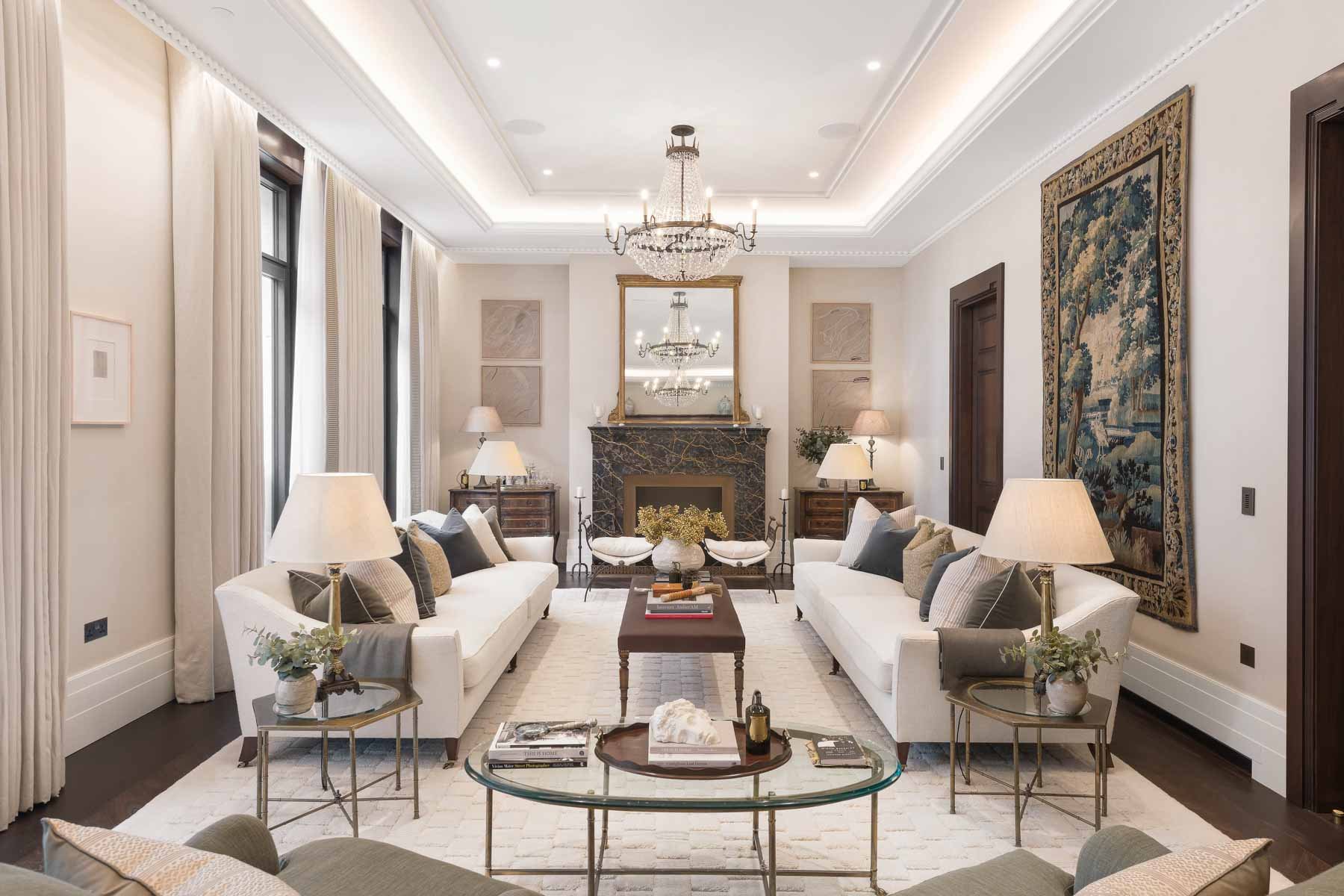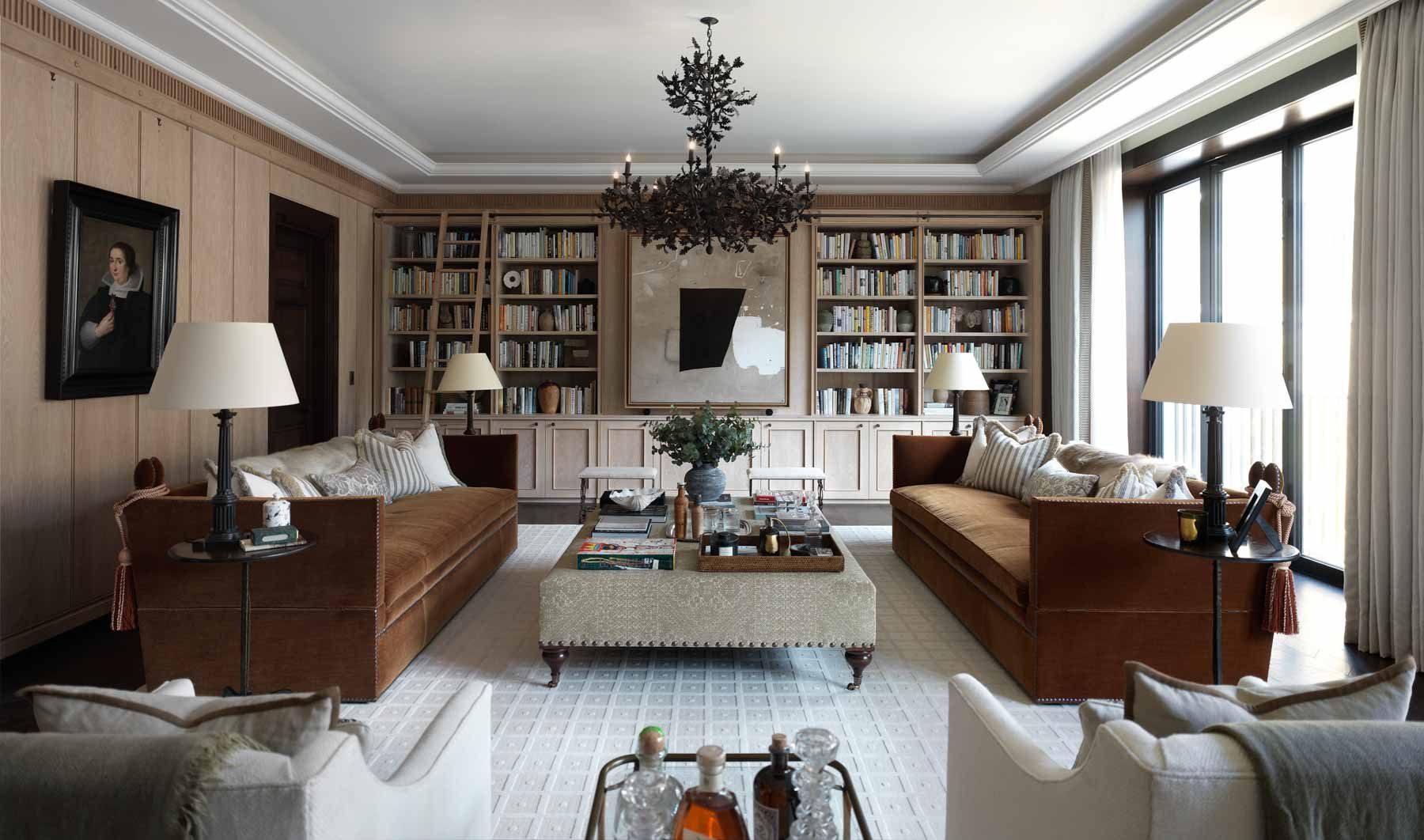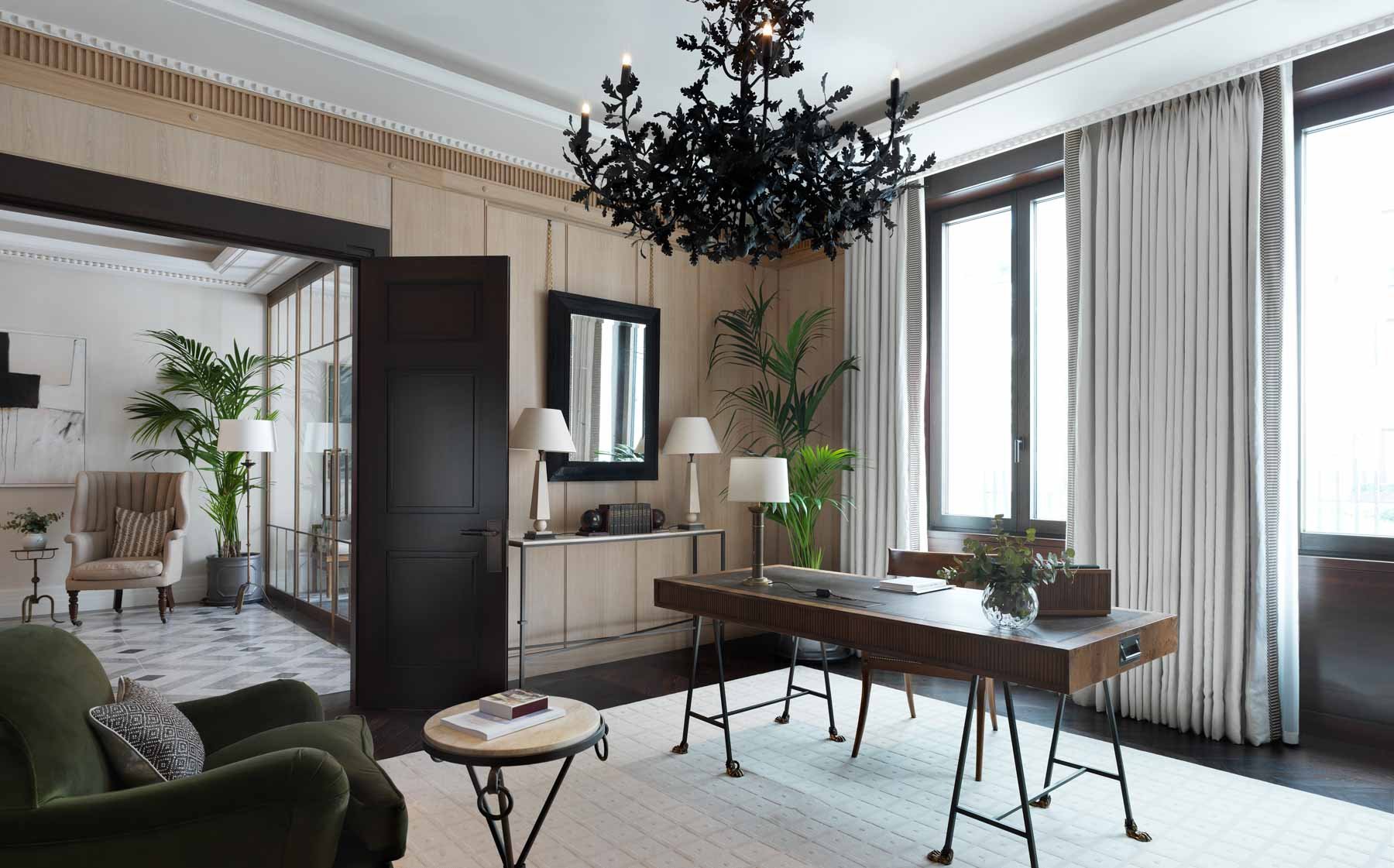Super-prime luxury with green credentials
All images: Whistler Square townhouse
by Emily Cathcart
A revival of gracious garden square living combines architectural tradition, 21st-century style and impeccable green credentials.
If you’re wondering where to find the actual lap of luxury, it’s on a former military site tucked between Sloane Square and the River Thames. Situated on 12.8 acres, as its name suggests Chelsea Barracks was originally built in the 1860s to accommodate two infantry battalions. After being out of public reach for more than 150 years, with the troop housing long gone, it’s transforming into one of the city’s most exclusive addresses.
Developed by Qatari Diar Europe, upon its completion in 2026 Chelsea Barracks will comprise a mini-village of apartments, penthouses, mews and townhouses. Among them are the 13 opulent Whistler Square townhouses, each arranged over six floors. Lofty ceilings, generous proportions and sophisticated interiors (by Albion Nord) are only to be expected—but uniquely, luxury is taken to even greater heights with enhanced private amenities like rooftop terraces and an in-home spa suite complete with 12m pool, sauna, steam room, treatment room, gym and changing room.
In the process of creating Chelsea Barracks, five acres of previously hidden land are being opened up to create beautifully landscaped public outdoor spaces, including seven garden squares in the grand London tradition. But the green commitment isn’t left on the doorstep: the development has been awarded LEED (Leadership in Energy and Environmental Design) Platinum certification. As the benchmark for green building, LEED Platinum status confirms that this is now the most sustainable development in Europe, and one of only 16 to achieve the standard worldwide.
Award-winning architectural firm PDP London designed the Whistler Square townhouses at Chelsea Barracks, adapting elegant Georgian period principles for a contemporary age. Marion Baeli, Partner at PDP London explains the importance of achieving LEED Platinum certification—particularly crucial from her perspective as an expert on the NLA Net Zero Panel: “It is a truly remarkable, collaborative achievement that such a sizeable site has been able to be comprehensively designed to meet stringent performance targets, whilst still achieving architecture of great quality. I believe this proves that sustainability does not mean a selective or restrictive aesthetic has to be applied.
The site has been designed to be resilient and durable, arranged around energy centres that can be upgraded as technologies improve. At Chelsea Barracks, the energy production is not in the townhouses or apartments individually, but in a centralised location, so the control and efficiency of the system can be best optimised at all times and work well with a very efficient building fabric. This results in a flexible, future-proofed arrangement, removing the need for any disruptive future retrofit MEP [Mechanical, Electrical and Project] measures to take place within the individual properties.”
Does Baeli think that other residential properties will take the lead of Chelsea Barracks and the Whistler Square townhouses? “I believe that other residential properties will follow suit, especially as the UK Building Regulations around carbon emissions are tightened and gas boilers are likely to be forbidden in new houses by 2025. It is no longer acceptable to rely on poor building fabric and gas boilers—a ‘fabric first’ approach is here to stay. At PDP London, we are already working on a Net Zero carbon project for developers with a large amount of stock, as they are looking to become more resilient and more accountable to future generations as well.”
Though the focus is firmly on things to come, there is also a nod to the past: the Grade II listed Garrison Chapel from 1861 has been painstakingly restored, living on as a gallery and community gathering place. But with greater sustainability already a reality and future-proofing in place, this new highly efficient, super-prime development is light years away from its beginnings as a draughty Victorian soldiers’ billet.







